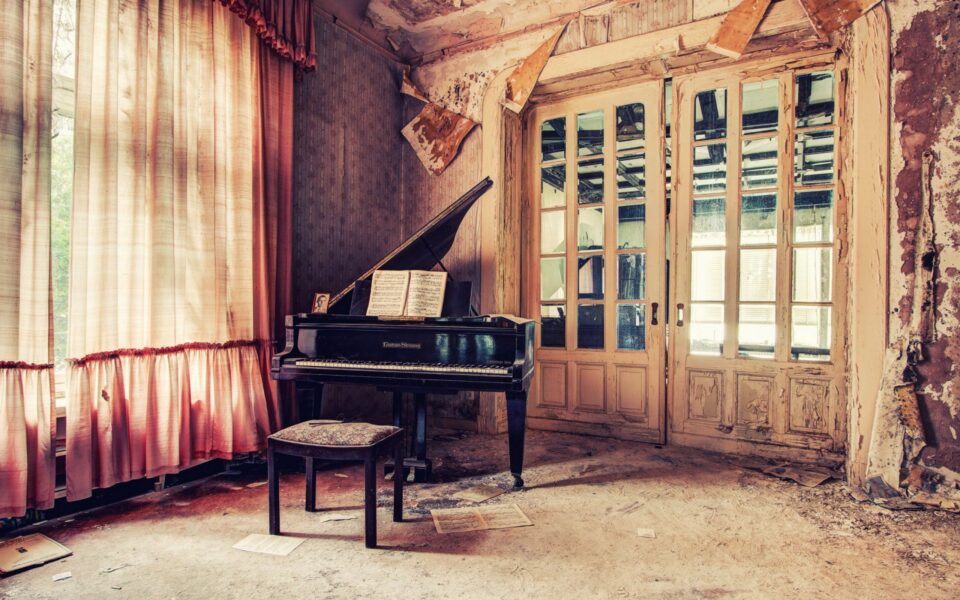The piano is a musical instrument played by means of a keyboard. It is one of the most popular instruments in the world. Widely used in classical and jazz music for solo performances, ensemble use, chamber music, and accompaniment; the piano is also very popular as an aid to composing and rehearsal. Although not portable and often expensive, the piano’s versatility and ubiquity have made it one of the world’s most familiar musical instruments.
The earliest known pianos were made by Bartolomeo Cristofori (1655–1732) around 1700 in Italy, though pianos spread only gradually to other parts of Europe over time. The full name “pianoforte” was not applied to the instrument until the early 1800s, and the word “piano” is a shortened form of “pianoforte”. The Italian musical terms “fortepiano” and “pianoforte” designate different instruments with different tone qualities.

The modern piano has 88 keys (seven octaves plus a minor third, from A0 to C8), a range of about seven octaves, and can produce a wide variety of tones. The black keys are made of ebony or other hardwood, while the white keys are covered in ivory (or plastic on modern pianos). Hammer action mechanisms vary in weight and responsiveness, depending on the style of music being played. Grand pianos have heavier actions and smaller soundboards than upright pianos. Upright pianos, on the other hand, have lighter actions and larger soundboards than grand pianos.
In acoustic pianos, string vibration is transmitted through a bridge to a soundboard that amplifies by more efficiently coupling string vibrations to the air. Pressing a key causes a felt-covered hammer to strike steel strings, which set them into vibratory motion (see piano action). The hammer rebounds from the strings and returns to its resting position. In high-end or concert grands, there are often three strings for each note instead of two found on smaller models. When the key is released, the damper stops the strings’ vibration immediately so that it produces no sound during its brief period under tension [end of copied background information].
The modern piano keyboard evolved from the clavichord, which had a softer sound because the strings were damped by pressing a key. The clavichord’s strings were struck by small metal blades (claviers) that were hammered against the strings, and its sound was muffled by placing cloth over the strings or by stuffing the instrument with wool. The pianoforte had a much louder sound because its strings were not damped. The use of pedals to hold down strings and create sustained notes revolutionized the playing of music on the pianoforte.
The first successful pianos were made in Italy by Bartolomeo Cristofori (1655–1732), and appeared in the 1720s. From 1700 through 1725, Cristofori constructed hundreds of pianos and harpsichords; today, 61 Cristofori instruments survive in an estimated 137 instruments created between 1700 and 1720. These instruments represent a turning point in piano history. His new instrument was quieter than other keyboard instruments of the day and made it possible for early 18th century composers such as Alessandro Scarlatti (1660–1725), Domenico Scarlatti (1685–1757) and Georg Philipp Telemann (1681–1767) to write melodic lines that were much more expressive than had been formerly possible on the harpsichord because its notes were not damped by keypress.

The invention of the piano was not immediately accepted by all musicians, however. In 1753, one music critic wrote that “the piano is good for nothing but rendering the most common and simplest music in the easiest way possible”. The French composer François Couperin (1668–1733) said in 1728 that the instrument “has no qualities that are not found in other keyboard instruments”. It was not until the early 1800s that the piano began to be accepted as a serious musical instrument. Ludwig van Beethoven (1770–1827) and Franz Schubert (1797–1828) were among the first composers to write for the instrument exclusively. Johannes Brahms (1833–1897) wrote his first Piano Concerto in 1859.
By the early 20th century, a broad range of music was written for piano by composers such as Sergei Rachmaninoff (1873–1943), Igor Stravinsky (1882–1971), Gustav Mahler (1860-1911), Serge Prokofiev (1891–1953), Dmitri Shostakovich (1906-1975) and Karol Szymanowski (1882-1937). It quickly became the most popular of all instruments, with an estimated 500 million pianos sold worldwide by 1980. The piano is used to accompany singers or other instrumentalists on stage or recording. Pianists must learn to play a wide range of repertoire, from Bach and Beethoven to popular music and jazz.
The modern piano has 88 keys, seven octaves, and is about 1.5 meters long, 0.8 meters wide, and 1 meter high. It weighs about 150 kilograms. Acoustic pianos are usually classified by the length of their strings: grand pianos have strings that are about 2.4 meters long; uprights have strings that are about 1.2 meters long. Upright pianos can be further divided into spinets, consoles and studios. Spinets have the shortest strings and least soundboard area; consoles are larger than spinets but smaller than studios; studios have the largest soundboard area. To buy piano or to learn new skills of piano music sheets visit:https://pianogg.com/

